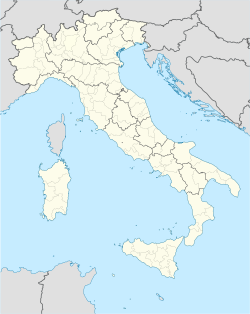Ribera | |
|---|---|
| Comune di Ribera | |
 Panorama of Ribera | |
| Coordinates: 37°29′58″N13°15′54″E / 37.49944°N 13.26500°E | |
| Country | Italy |
| Region | Sicily |
| Province | Agrigento (AG) |
| Frazioni | Borgo Bonsignore, Seccagrande |
| Government | |
| • Mayor | Matteo Ruvolo |
| Area | |
• Total | 118.52 km2 (45.76 sq mi) |
| Elevation | 223 m (732 ft) |
| Population (31 August 2022) [2] | |
• Total | 17,757 |
| • Density | 150/km2 (390/sq mi) |
| Demonym | Riberesi |
| Time zone | UTC+1 (CET) |
| • Summer (DST) | UTC+2 (CEST) |
| Postal code | 92016 |
| Dialing code | 0925 |
| Patron saint | St. Nicholas |
| Saint day | December 6 |
| Website | Official website |
Ribera (Sicilian: Rivela) is a comune in the province of Agrigento, Region of Sicily, southern Italy, between the Verdura and Magazzolo valleys in the so-called Plain of San Nicola.
Contents
The town is connected by the SS115 state road, leading from Trapani to Syracuse. The Platani River, the third Sicilian river, flows nearby. It has enormously contributed to developing both farming and tourism in the area. Its mouth has been designated as a natural reserve.




